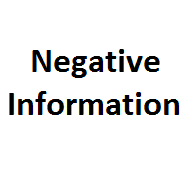Wall Street Journal ran a piece today about the profitability and long-term prospects of the Chase Sapphire Reserve card. A lot of the talk now is due to the fact that the card is nearing it’s one-year mark, a critical point when it’ll become clear how many of the cardholders are planning on keeping the card long term and how many will cancel.
The article discusses the increasing cost of rewards, including savvy users maximizing benefits, cardholders using the card more in the bonus categories, cardholders not carrying balances, as well as “some 5% to 10% of card holders tend to “shop around,” looking for new rewards.”
Chase is pushing for about $200 million in fresh cost cuts in the unit that oversees the CSR card, according to the article.
The question for us is how what kind of cost cutting measures Chase will take. Will the remove or reduce some benefits? Will they lower the annual travel credit (doubtful)? Put a cap on the amount which can be earned in bonus categories?
They do word it as a “way to eliminate waste,” so maybe it’s overkill to assume any benefit changes since they might just make some processes more efficient and somehow cut costs that way. I also wonder if it’ll be more about doing more reviews to weed out unprofitable customers as opposed to switching any card benefits.
We’ve recently seen two cost-cutting measures: (1) the $300 travel credit is now calculated for new members based on the cardmember year which saves Chase $300 in acquisition costs on the card since previously it was possible to use the travel credit twice during the first year, (2) Chase may have limited a bit what is considered as Travel since Plastiq is no longer coding as the bonus category (though it’s not entirely clear that this change was made by Chase).
A few other interesting points found in the article:
- “J.P. Morgan has tried to avoid signing up potential defectors by rejecting applicants who have opened up five new credit cards in the previous 24 months, known internally as the ‘5-24 rule’.”
So it’s not just us calling it the 5/24 rule. 😉 I wonder who started using that terminology first. - “You expense the acquisition costs over 12 months. The benefit comes over seven years,” J.P. Morgan Chairman and Chief Executive James Dimon said on a conference call this month. Seven years seems to me like a long time to turn a profit on a customer.
- The article discusses favorably the 100,000 UR points promo for Sapphire cardholders who take out a mortgage. 4,300 Sapphire cardholders took out a mortgage this year, versus half that amount last year. Of course, there are way more Sapphire cardholders this year than last year (meaning, it’s not that they’ve doubled the amount of people taking up on the promotion, more likely they’ve doubled the pool of Sapphire cardholders), but it just highlights that there are other aspects of profitability of having such cardholders, especially younger cardholders who are likely to be at a home-buying stage in their life. Let’s see if Chase doubles down on the cross-selling strategy with other such offers.
- It’s interesting to see a figure put on churners: we are 5-10% of the market, apparently. “Some 5% to 10% of card holders tend to “shop around,” looking for new rewards.”
We’ve mentioned few points from the WSJ article, the whole thing is worth a read.







